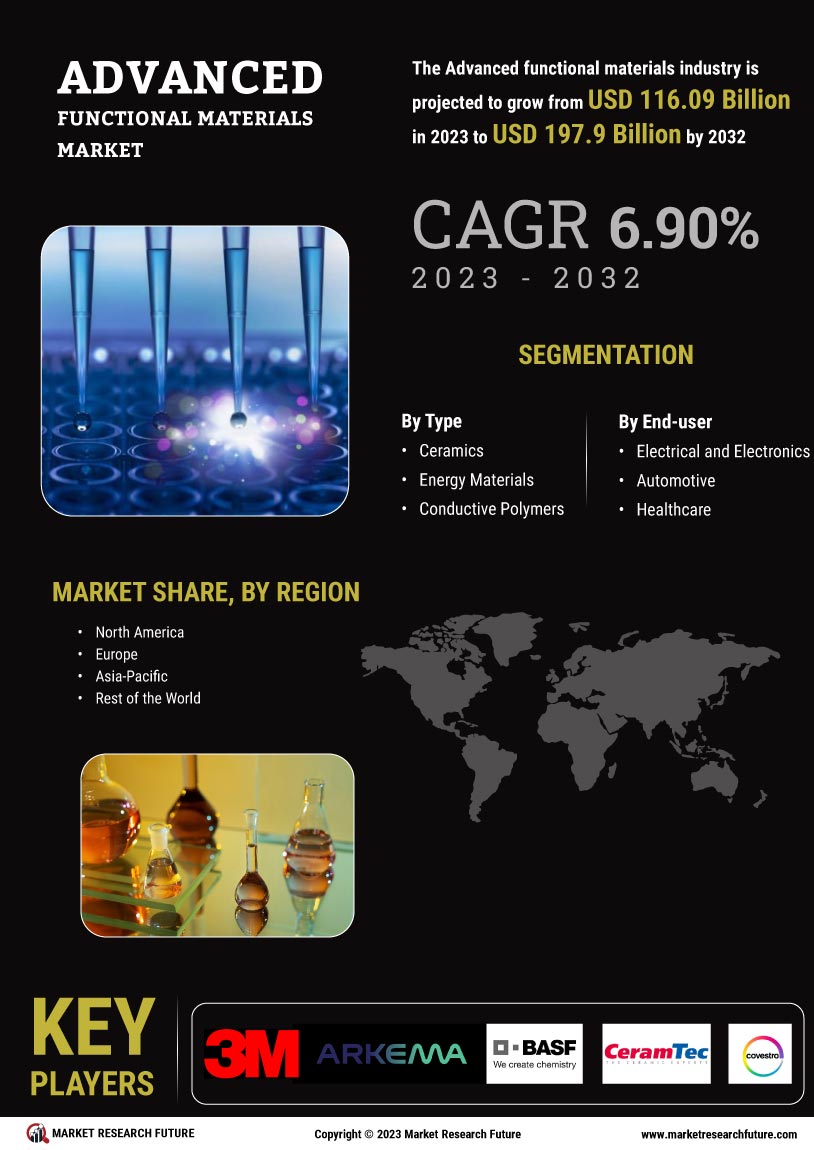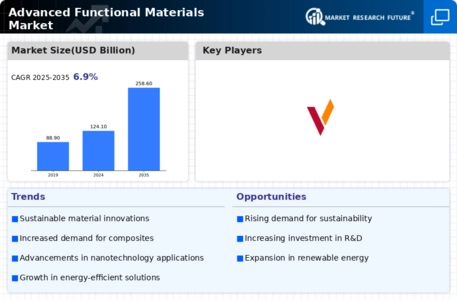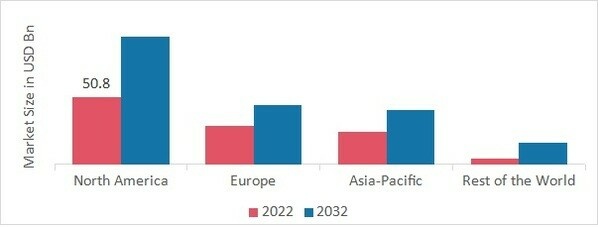Advanced Functional Materials Market Summary
As per Market Research Future Analysis, the Global Advanced Functional Materials Market was valued at USD 124.10 Billion in 2024 and is projected to grow from USD 132.67 Billion in 2025 to USD 258.60 Billion by 2035, with a CAGR of 6.90% during the forecast period. The growth is driven by the demand for high-performance materials across various industries, including aerospace, automotive, electronics, and healthcare. Key materials include titanium alloys, carbon-fiber composites, and advanced ceramics, which enhance performance and sustainability.
Key Market Trends & Highlights
The demand for high-performance materials is significantly shaping the advanced functional materials market.
- The nanomaterials segment dominated the market due to their tunability for specific applications.
- The electrical and electronics sector generated the most revenue in 2022, driven by the need for miniaturization.
- North America held the largest market share at 45.80% in 2022, with significant advancements in semiconductor materials.
- The Asia-Pacific region is expected to grow at the fastest CAGR from 2023 to 2032, led by electronics manufacturing.
Market Size & Forecast
| 2024 Market Size | USD 124.10 Billion |
| 2035 Market Size | USD 258.60 Billion |
| CAGR (2025-2035) | 6.90% |
Major Players
Key companies include 3M, Arkema, BASF SE, CeramTec GmbH, Covestro AG, Evonik Industries AG, Hexcel Corporation, KYOCERA Corporation, Momentive, SHOWA DENKO K.K., Sumitomo Chemical Co., Ltd., Emeren.



 Source: Secondary Research, Primary Research, Market Research Future Database and Analyst Review
Source: Secondary Research, Primary Research, Market Research Future Database and Analyst Review








Leave a Comment